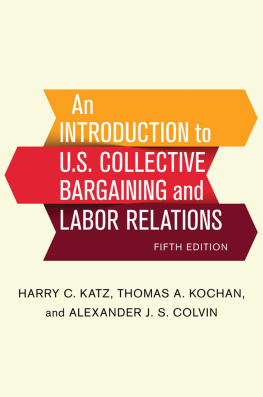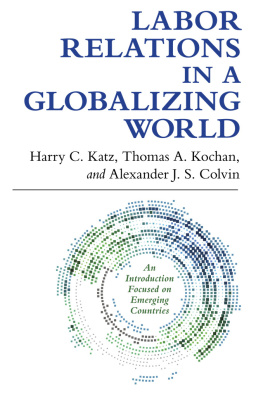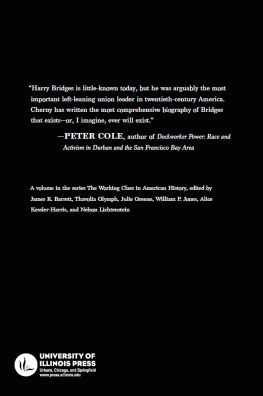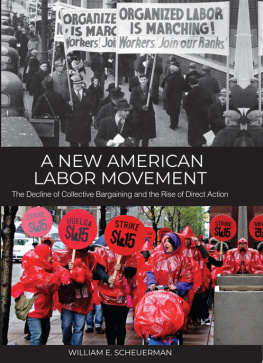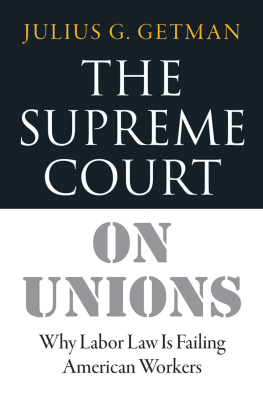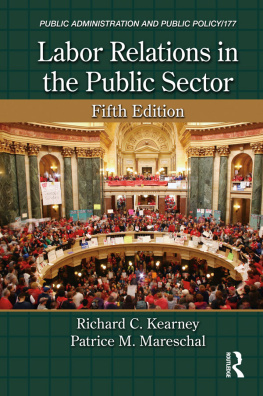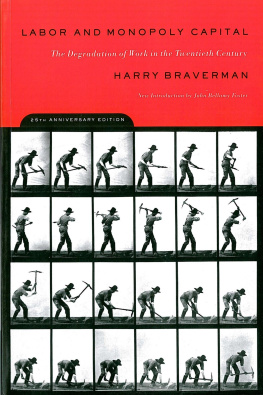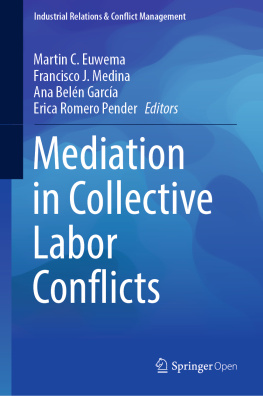Preface
This book provides an introduction to collective bargaining and labor relations with a focus on developments in the United States. It is appropriate for students and labor relations professionals, including unionists, managers, and neutrals. The strength of this text lies in its logical coherence and its comprehensive coverage of contemporary developments.
KEY FEATURES
A three-tiered strategic choice framework that guides the text in a unified manner (presented in Chapter 1).
A thorough grounding in labor history (Chapter 2) and labor law (Chapter 3).
Coverage of living wage and minimum wage campaigns and other emerging forms of collective representation that are addressing income inequality in new ways (see especially Chapter 7).
An examination of the influence of business and union strategies (Chapters 5 and 6) with numerous contemporary illustrations of how those strategies affect collective representation.
Consideration of the processes of contract negotiation (Chapters 8 and 9) and contract administration (Chapter 11), with frequent comparisons to nonunion practices and developments.
Examination of the special aspects of collective bargaining in the public sector (Chapter 13).
A look at global issues throughout the text and in a separate chapter on international issues (Chapter 14) and a chapter on labor relations in other countries (Chapter 15). Chapter 14 analyzes the labor relations issues multinational corporations face, including labor rights issues associated with global supply chains. Chapter 14 also analyzes the growing influence of NGOs and cross-national unionism.
A look at how labor relations systems in Germany and Japan and four key transitioning countries (China, India, Brazil, and South Africa) compare to practices in the United States (Chapter 15).
Boldface key terms in the text and a glossary that defines the terms.
URLs for related websites at the end of the chapters.
The textbook is supplemented by an instructors website resource, which includes an extensive instructors manual with a test bank, PowerPoint chapter outlines, mock bargaining exercises, organizing cases, grievance cases, and classroom-ready current events materials. The website also includes support materials for mock bargaining that help students engage in contract costing and financial forecasting.
CENTRAL THEMES AND TEXT ORGANIZATION
The text follows a strategic-choice framework that has three tiers: the environmental forces that shape collective bargaining, the process of collective bargaining, and bargaining outcomes. This structure follows in the tradition of John Dunlops seminal work, Industrial Relations Systems by emphasizing the interaction between legal, historical, and political institutions and economic factors.
The text also examines how business and union strategies constrain the process and outcomes of collective bargaining. After considering strategic issues, we analyze the middle tier of bargaining, where contract negotiation and administration are so important. We also examine workplace issues such as the organization of work and communication procedures. Harry Katz and Tom Kochan (with Robert McKersie) originally developed this three-tiered framework in The Transformation of American Industrial Relations, 2nd edition (Ithaca, N.Y.: ILR Press, 1994).
Through its examination of the influence of business and union strategies on labor relations, this book provides a broader focus than most other introductory texts do. In addition, we feel that students must also understand the influence of investment strategies, production strategies, union choices, and other strategic forces if they are to accurately comprehend how collective bargaining works in the modern economy. A separate chapter (Chapter 12) looks at workplace outcomes, including participatory processes and their connections to collective bargaining.
Our focus in this book also is broadened by our interest in international developments. We highlight international comparisons and pressures with examples throughout the text and focus on these issues in separate chapters: one on international (cross-national) matters (Chapter 14) and one on labor relations in other countries (comparative issues; Chapter 15). The emergence of a vibrant international workers rights movement is one of the most exciting developments of the day. Readers should understand the central roles that labor relations problems and labor unions play in these events.
Extensive coverage of developments in the nonunion sector also distinguishes this book from others. The nonunion sector is important in its own right, given the decline in union membership in the United States. In addition, our analysis of the nonunion sector contributes to an understanding of the pressures and changes occurring within the union sector.
The public sector has increased in importance as unionization has declined in the private sector. We examine the special features of the public sector in Chapter 13.
Our broad focus helps readers gain a full understanding of collective bargaining. We present numerous illustrations throughout the text, some of which are highlighted as cases. Information about labor history and labor law help ground readers in the workings of American collective bargaining. These topics are covered early in the book (Chapters 2 and 3).
Students also can expand their understanding of collective bargaining through the mock bargaining exercises provided on the supplemental website. Some of these exercises involve private sector negotiations, while others involve public sector cases. Full instructions for the exercises and recommendations gained from our own classroom experience are provided in the instructors manual. Material is available on the website that allows students (even those with no previous computer experience) to cost contract settlement terms and forecast the financial and employment implications of alternative settlements. We have used this material in our classes and highly recommend it.
Grievance arbitration and organizing cases are also provided on the course website. Those cases illustrate a range of contemporary developments and enable students to test their skills as third parties.
INSTRUCTOR S RESOURCE WEBSITE
The course web site includes an instructors manual, PowerPoint chapter outlines, a computerized test bank, and other materials that can be used to enhance student learning and classroom discussions. In addition to suggestions about how to use the mock bargaining exercises and supplementary material for those exercises, the instructors manual includes organizing cases, arbitration cases, and mock bargaining cases. It also includes answers to the end-of-chapter discussion questions, chapter outlines, lecture outlines, and citations to recent news stories and other materials (including YouTube videos) available on the Internet about current labor relations issues. In our teaching of introductory collective bargaining, we have found that the mock bargaining exercises and films help convey how bargaining really works. We would appreciate hearing your reaction to the text and these materials. Instructions for accessing the instructors manual are on the website of the ILR Schools Scheinman Institute on Conflict Resolution at Cornell University (www.ilr.cornell.edu/scheinman-institute).

